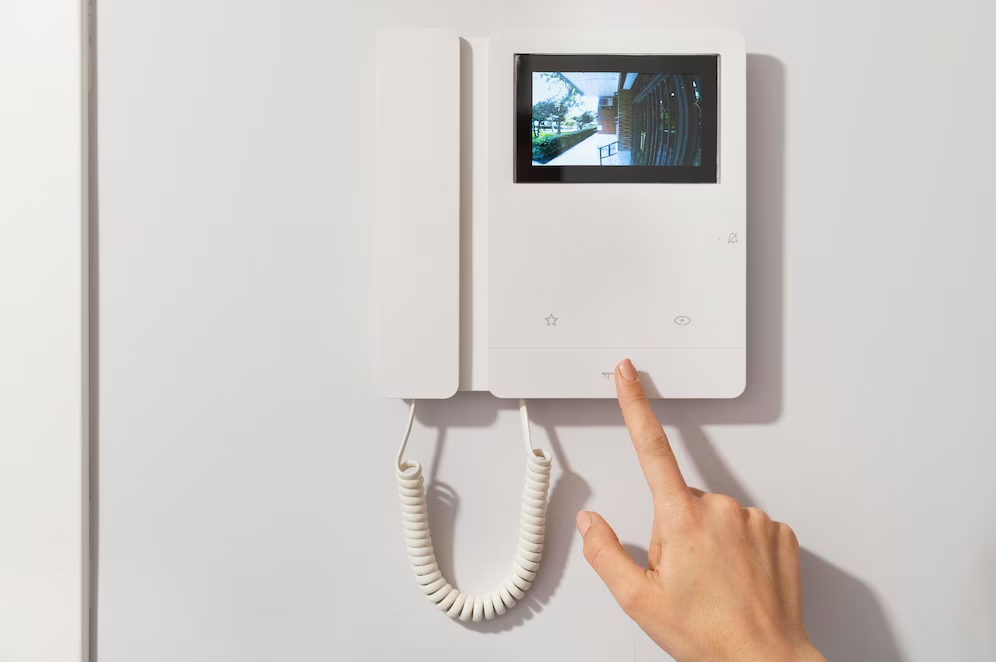



Audio Video Intercom
Audio video intercom systems are an essential component of modern security solutions, providing
a robust means of communication and monitoring. Their ability to integrate with smart
technologies and other security devices enhances safety and convenience for both residential and
commercial users. With features like night vision, remote access, and motion detection, these
systems not only deter unauthorized access but also facilitate effective communication and
documentation, making them a valuable investment in security management.
An audio video intercom is a communication system that combines video and audio to allow for two-way communication between a visitor and a resident or security personnel. It typically consists of an outdoor unit equipped with a camera and microphone, and an indoor unit with a monitor and speaker. These systems are commonly used in residential, commercial, and industrial settings to enhance security and convenience.
Specifications
Camera: High-resolution (HD or Full HD) with night vision capabilities.
Microphone and Speaker: Noise-cancellation features for clear audio communication.
Monitor: Screen size ranging from 7 to 10 inches, with options for touch screens.
Connectivity: Wired (CAT5/CAT6) or wireless (Wi-Fi).
Power Supply: DC power or Power over Ethernet (PoE).
Integration: Compatibility with smart home systems, mobile apps, and cloud storage.
Recording: Options for recording video and audio for security purposes.
User Interface: Intuitive design for easy operation.
Features
Real-time Video and Audio: Instant communication with visual confirmation.
Remote Access: Monitor and communicate with visitors via mobile apps from anywhere.
Two-way Communication: Allows for direct conversation with visitors.
Night Vision: Enhanced visibility in low-light conditions.
Motion Detection: Alerts for any movement detected at the entrance.
Integration with Access Control: Can work alongside electronic locks or gates.
Visitor Logs: Record visitor interactions for security tracking.
Benefits
Enhanced Security: Deters unauthorized access with visual identification.
Convenience: Allows for communication without opening the door.
Remote Monitoring: Provides peace of mind by enabling monitoring from anywhere.
Improved Communication: Facilitates clearer communication with visitors.
Integration Potential: Works well with other security systems like alarms and
cameras.
Documentation: Provides a record of interactions for accountability.


